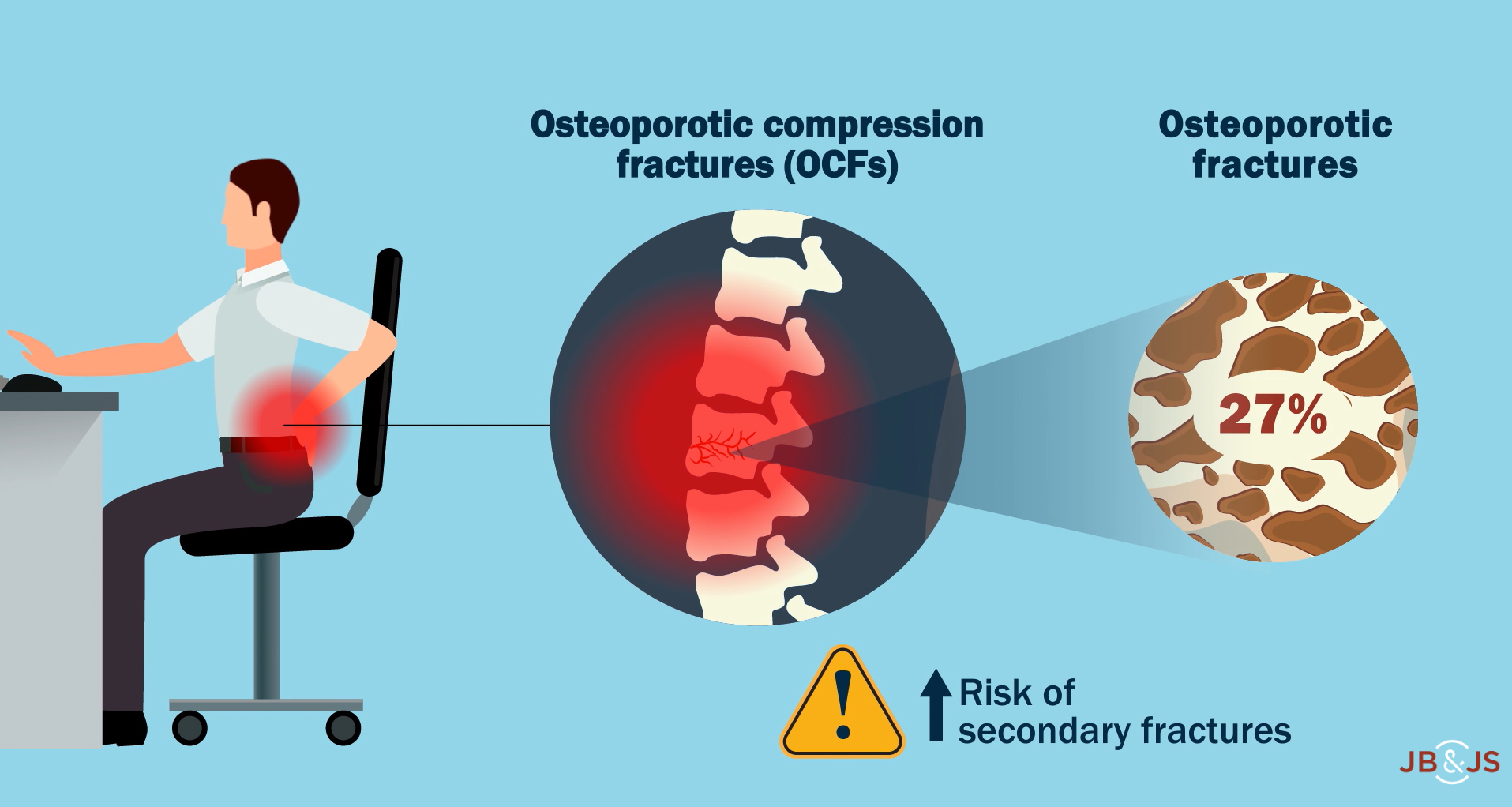In a new study in JBJS, Mills et al. evaluate whether cement augmentation increases the risk of secondary fracture following a vertebral osteoporotic compression fracture (OCF).
The investigators also examine whether the rate of secondary fracture is reduced by use of anti-osteoporotic medication, and they evaluate the rate of osteoporosis treatment with medication following an initial vertebral OCF.
- A total of 36,145 patients diagnosed with an OCF were identified in a national database. Of these, 71.7% underwent nonoperative management and 28.3% underwent cement augmentation (vertebroplasty or kyphoplasty).
- Secondary fracture risk was evaluated using univariate and multivariate regression analysis (variables included kyphoplasty, vertebroplasty, anti-osteoporotic medications, age, gender, and Elixhauser Comorbidity Index).
- The authors found that the secondary fracture rate did not differ significantly by treatment cohort: 14.5% for vertebroplasty and 18.5% for kyphoplasty compared with 21.8% for nonoperative management.
- Among the full cohort, only 7.8% (2,833 patients) received a prescription for an anti-osteoporotic medication following the initial OCF, and 92.2% (33,312) did not. The rate of secondary fracture differed significantly on multivariate analysis: 10.1% for those who received medications vs. 21.9% for those who did not (odds ratio, 1.23; p < 0.001).
In this study, cement augmentation did not alter the rate of secondary fracture after vertebral OCF, but anti-osteoporotic medications decreased the risk of secondary fracture.
The authors note the low rate of osteoporotic treatment found in the study (7.8%), concluding that “Physicians should be aware of this large gap in osteoporosis management, and pathways to increase the initiation of anti-osteoporotic medication following vertebral OCFs should be created and implemented.”
A video summary of this study is available with the full report at JBJS.org.
Related reading on OrthoBuzz: What’s New in Osteoporosis and Fragility Fractures 2022



